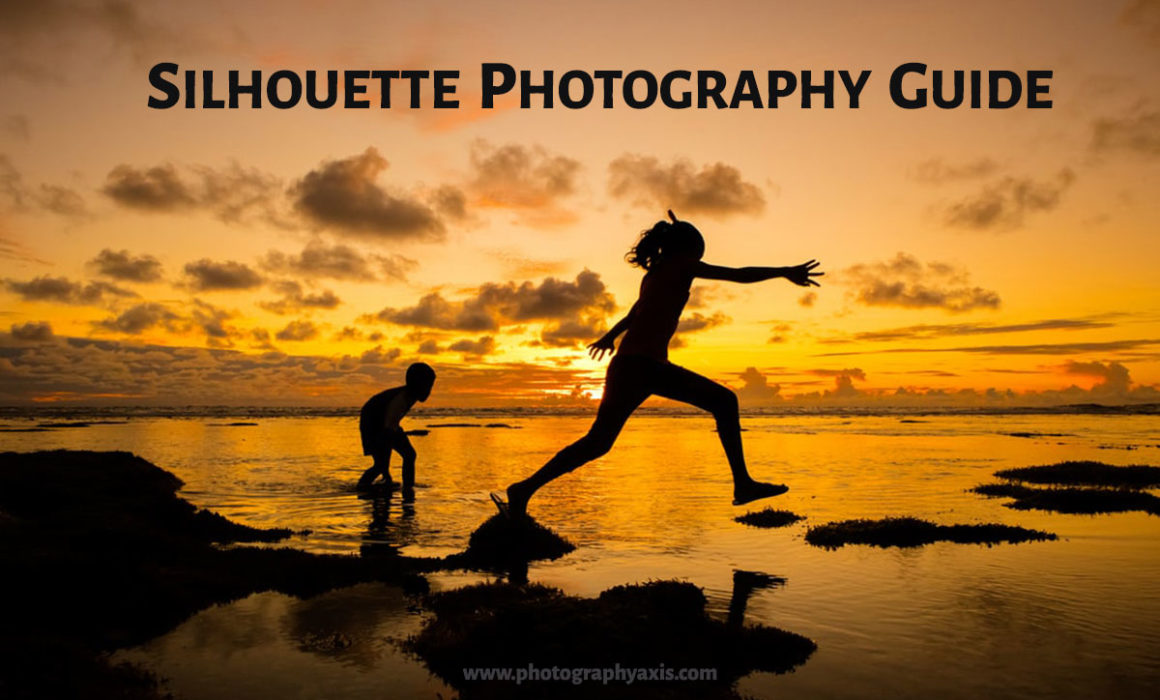How to Photograph Silhouettes?
Are you looking to capture great Silhouette images? If yes, then you are in the right place. In this article, I will explain the correct technique, camera settings and lighting conditions to photograph beautiful silhouettes.
What is Silhouette Photography
Before getting into Silhouette photography, let us see what silhouettes are. Silhouettes are shapes of objects without any details. Only the shape of the subject will be visible.
Silhouette photography is the type of photography that deals with the shape of the subjects in the frame and not the details. These shapes will be mostly in black. It brings out more feel and drama to the image.
Conditions for Silhouette Photography
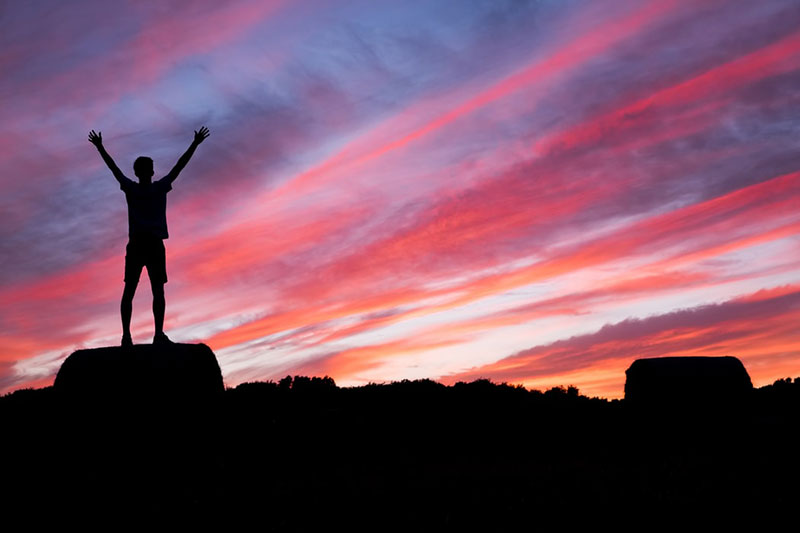
You cannot shoot Silhouettes in all types of lighting conditions.
You should have more light in the background of the subject than in the foreground to capture silhouettes. This lighting source can be natural sunlight or artificial external lighting.
So, when it comes to lighting, it is the exact opposite of regular photography.
Camera Gear for Silhouette Photography
Any type of camera which supports a manual mode or a semi-automatic mode like Aperture priority mode can be used to capture silhouettes.
If you are using an interchangeable lens camera like a DSLR camera or a mirrorless camera, then you should choose the lens to match your photography type.
So, if you are looking for a landscape or people silhouette, then use a wide-angle or a portrait lens. For bird and animal silhouettes, use a telephoto lens.
So, you need to set the focal length depending on what you are shooting.
I will explain Silhouette photography using the Silhouette images captured using my DSLR camera.
Camera Settings for Silhouette Photography
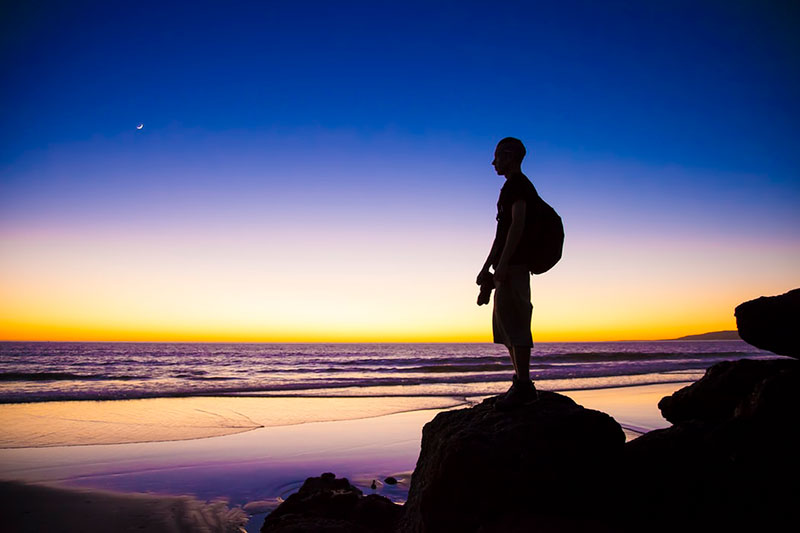
The right camera settings will help you to get the perfect silhouette shots without spending more time. So, let us see the different camera settings.
Camera Mode
I recommend using manual mode. But, if you find it challenging to use this mode, you can go for the Aperture priority mode.
📖READ 👉🏼 : How to Use Camera in Aperture Mode?
📖READ 👉🏼 : How to Use Camera in Manual Mode?
In Aperture mode, you need to set the Aperture, and the camera will give you the rest of the exposure settings.
Focus & Exposure
For Silhouette photography, the focus should be on the silhouette subjects and exposed for the background.
You can use the Back button focusing feature in your DSLR or mirrorless camera. It allows you to use two separate buttons, one for the focus lock on the subject and the other for metering and capture.
You need to meter for the brightest spot in the background to get the correct silhouette exposure. If there is Sun in the scene, then you need to meter for the Sun.
If you find the picture a little dark, then increase the exposure by a stop or decrease if it is very bright. The outline shape of the subject should be crisp.
If you are not familiar with Back-button focusing, then use the shutter button to do the focusing and metering job. You need to reduce the exposure settings by 2-stops or more to get the background appropriately exposed with a good silhouette shape in the foreground.
Once you are done with the exposure settings, you need to compose the image correctly for a beautiful Silhouette shot.
Aperture, Shutter Speed and ISO
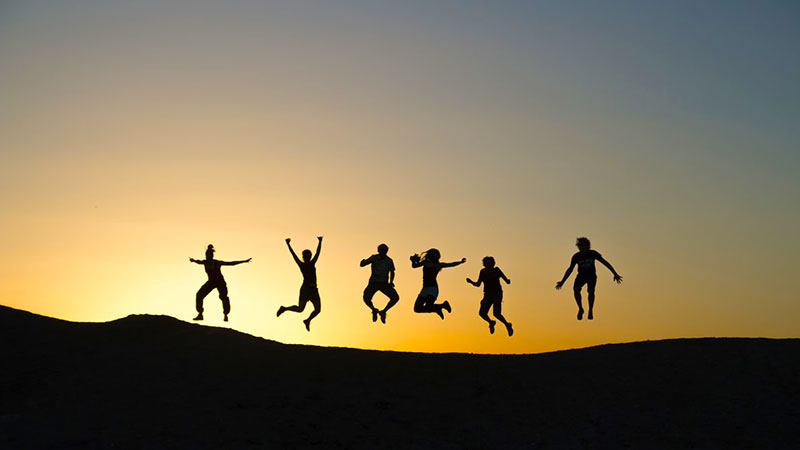
As you all know, Aperture, Shutter speed, and ISO together decide the Image exposures. Here, we want the background to be adequately exposed. So, you need to choose the settings accordingly.
You can go for a base ISO of 100 or 200.
If you have only one subject in the frame, then you can go for the maximum Aperture opening like the f/4 if you are using a Canon 70-200 f/4 L IS II USM lens.
If you have multiple subjects, like a group of people, then you need to have more Depth of Field. So, reduce your Aperture opening by one or two stops. For example, a value of f.5.6 or f/8 will be good with the same lens.
Now, comes the shutter speed part. If you are using Aperture priority mode, then the camera will assign the shutter speed based on the Aperture, ISO, and Exposure settings. If your subject is in motion, say people jumping in the scene, then go for higher shutter speed to freeze the action. So, fine-tune your settings accordingly.
If you are using Manual mode, then you need to set the Shutter speed in such a way that you get the background exposed correctly without blurring the Silhouette shape.
Metering and White Balance
Evaluative metering would be the ideal choice in this situation since we are not interested in capturing the subject details.
You can set the white balance to “Shade” if you are shooting at Dusk or dawn. If you are capturing a daytime silhouette, then “Daylight” would be the right White balance settings.
If you find it difficult to set the white balance, then, leave it as “Auto.”
Make sure to record the image in the RAW format. So, even if the camera assigns the wrong white balance settings, you can fix it during the image editing stage quickly.
What is the Best Time to Photograph Silhouettes?
Dawn and Dusk are the two best times to photograph silhouettes. It is the time where the scene will be filled with lovely shades of red, orange, and golden yellow colors. Thus, you get the best silhouette frames at these times.
You can also shoot silhouettes against harsh daylight. But, you will not get these beautiful colors in the frame.
Silhouette pictures in daylight will mostly leave you with a background in shades of white or blue. You can make it enjoyable only with the image composition.
Examples of Silhouette Photography
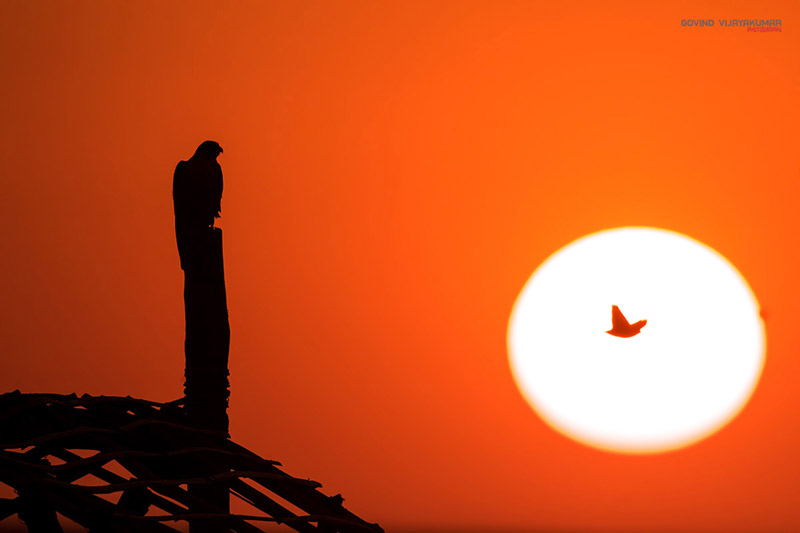
The above Silhouette image of Peregrine Falcon and the Lark while the Sun is going down is shot from Little Rann of Kutch in Gujarat, India. It is one of my favorite silhouette images.
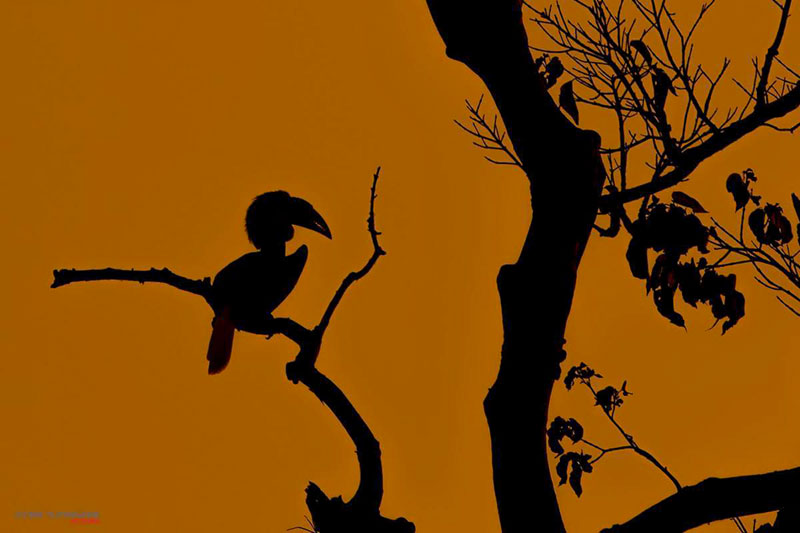
This Silhouette image of Wreathed Hornbill is captured from Namdapha National Park in Assam, India. It was photographed during the late evening time, and the conditions were perfect for silhouette photography.
Conclusion
Now, you know how to photograph beautiful Silhouettes. So, next time, use these tips when you have an opportunity to do Silhouette photography.
📖READ 👉🏼 : How to Photograph Water Reflections?

